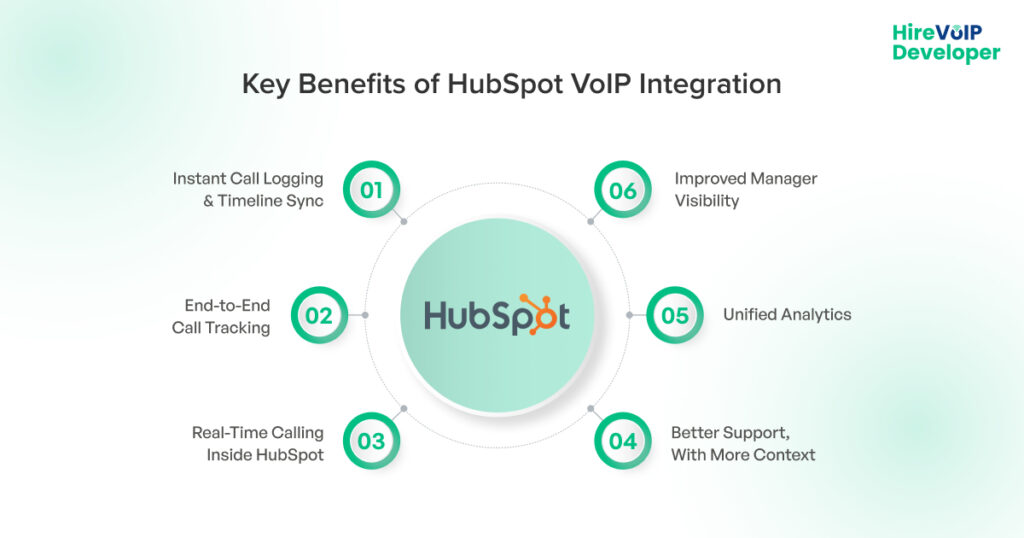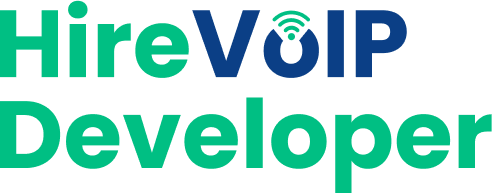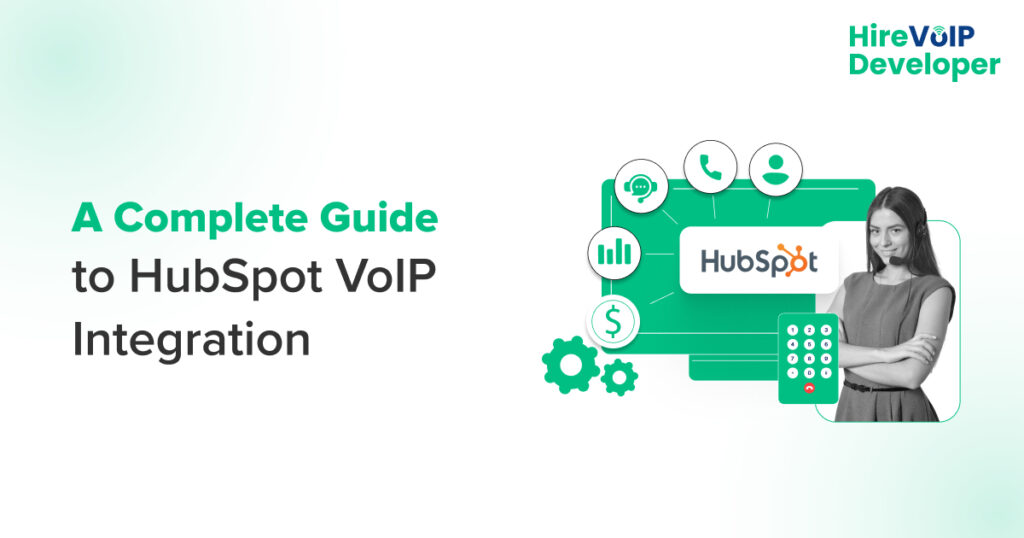📝 Blog Summary
HubSpot works best when your calls are part of the story. This blog breaks down how HubSpot VoIP integration brings call tracking, logging, and analytics into your CRM, so your team moves faster and nothing gets missed.
Using HubSpot without a connected phone system is like using a CRM with half the data missing.
Your sales and support teams may be calling leads or answering customer queries, but without VoIP integration, those conversations live outside the HubSpot CRM. And that means:
- Calls aren’t logged automatically
- Teams lose context before and after a call
- There’s no way to analyze outcomes or optimize workflows
- Managers can’t measure what’s working and what’s not
That’s where a VoIP business phone system for HubSpot changes everything.
When integrated properly, it brings real-time calling, logging, tracking, analytics, and even automations into the center of your CRM.
What Is HubSpot VoIP Integration and How Does It Work?
HubSpot VoIP integration connects your cloud-based phone system directly into HubSpot, allowing users to make and receive calls from within the CRM and automatically log every detail.
A proper integration enables:
- Click-to-call from contact, company, or deal records
- Inbound call popups with caller info pulled from HubSpot
- Auto-logging of call duration, outcome, notes, and call recordings
- Workflow automation triggered by call events
- Real-time visibility into rep or agent activity across teams
In short, it connects conversations to your data, without the manual work.
🚀 Turn every call into data-driven action with HubSpot VoIP integration!
Key Benefits of HubSpot VoIP Integration
If you’re still using spreadsheets, sticky notes, or disconnected tools to manage calls, here’s what a modern integration delivers:

1. Instant Call Logging and Timeline Sync
Every inbound and outbound call is automatically recorded in the contact’s timeline, along with outcomes and notes—no rep memory required.
2. End-to-End Call Tracking
Track how many calls each rep is making, when they’re calling, and how those calls relate to deal stages, conversions, or ticket resolution.
This isn’t generic call data; it’s contextual, inside the HubSpot CRM.
3. Real-Time Calling Inside HubSpot
Reps can call directly from HubSpot using browser-based softphones or mobile apps; no switching platforms or manually entering numbers.
4. Unified Analytics
With call analytics in HubSpot, you can compare rep performance, understand customer sentiments, and tie call activity to outcomes.
5. Better Support, With More Context
Support agents can see past calls, open tickets, and customer history before picking up, making every conversation faster and more helpful.
6. Improved Manager Visibility
Leaders get dashboards showing:
- Total calls per rep/team
- Average handle times
- Missed call volume
- Follow-up completion rates
No more chasing metrics through disconnected systems.
Top Use Cases for VoIP HubSpot Integration
This integration isn’t just a backend upgrade. It directly impacts how your teams work, communicate, and deliver results. Here’s where it makes the biggest difference:
Sales Teams
- Power through lead lists with click-to-call
- Automatically log calls to deals and contacts
- Record calls for onboarding and QA
- Trigger workflows (e.g., follow-up tasks) post-call
Customer Support
-
- Route calls based on customer tier or ticket priority
- Display caller details and open tickets instantly
- Record calls for compliance or coaching
- Track support SLAs and resolution times
RevOps and Marketing
- Use call tracking to attribute leads to campaigns
- Analyze call patterns across lifecycle stages
- Feed insights into lead scoring and nurturing flows
This is where real HubSpot call tracking goes beyond just “how many calls” and starts driving strategic decisions.
Also Read: 7 Tips to Optimize Call Center Scheduling
Must-Have Features in a VoIP Phone System for HubSpot
When evaluating providers, make sure they offer the following:
| Feature | Why It Matters |
| Native HubSpot Integration | Avoids delays and failures from third-party workarounds |
| Click-to-Call | Speeds up outbound sales and follow-ups |
| Automatic Call Logging | Eliminates manual data entry |
| Call Recording | Supports training, quality control, and compliance |
| Call Routing Rules | Directs calls based on logic, queues, or business hours |
| HubSpot Call Analytics | Helps improve rep performance and customer response |
| Mobile & Browser Softphones | Gives remote teams full calling access |
| Workflow Trigger Support | Enables automations based on call events |
Choosing the Best VoIP for HubSpot
If you’re searching for the best VoIP for HubSpot, don’t just look at call quality or pricing. Focus on:
- How deeply it integrates into HubSpot (not just contact sync)
- What data it logs and where (e.g., timeline vs. activity feed)
- How calls are tracked, routed, and recorded
- Whether it supports global users, numbers, or compliance needs
- How easily it connects to workflows, reports, or custom dashboards
If your calls aren’t logged, your data is incomplete.
If your call routing isn’t intelligent, your customer experience suffers. And if your analytics don’t include voice, you’re missing key signals from the frontlines.
📞 Ready to connect VoIP with your HubSpot CRM?
A cloud VoIP system that integrates with HubSpot gives your teams the speed, visibility, and control they need, without disrupting workflows. It turns every call into insight and every conversation into progress.
Looking for a VoIP system that works seamlessly with HubSpot?
We develop custom VoIP solutions that integrate directly with HubSpot.
From intelligent call routing to complete CRM sync, we make sure your team doesn’t lose time, context, or data.
If your business runs on conversations, let’s talk!


